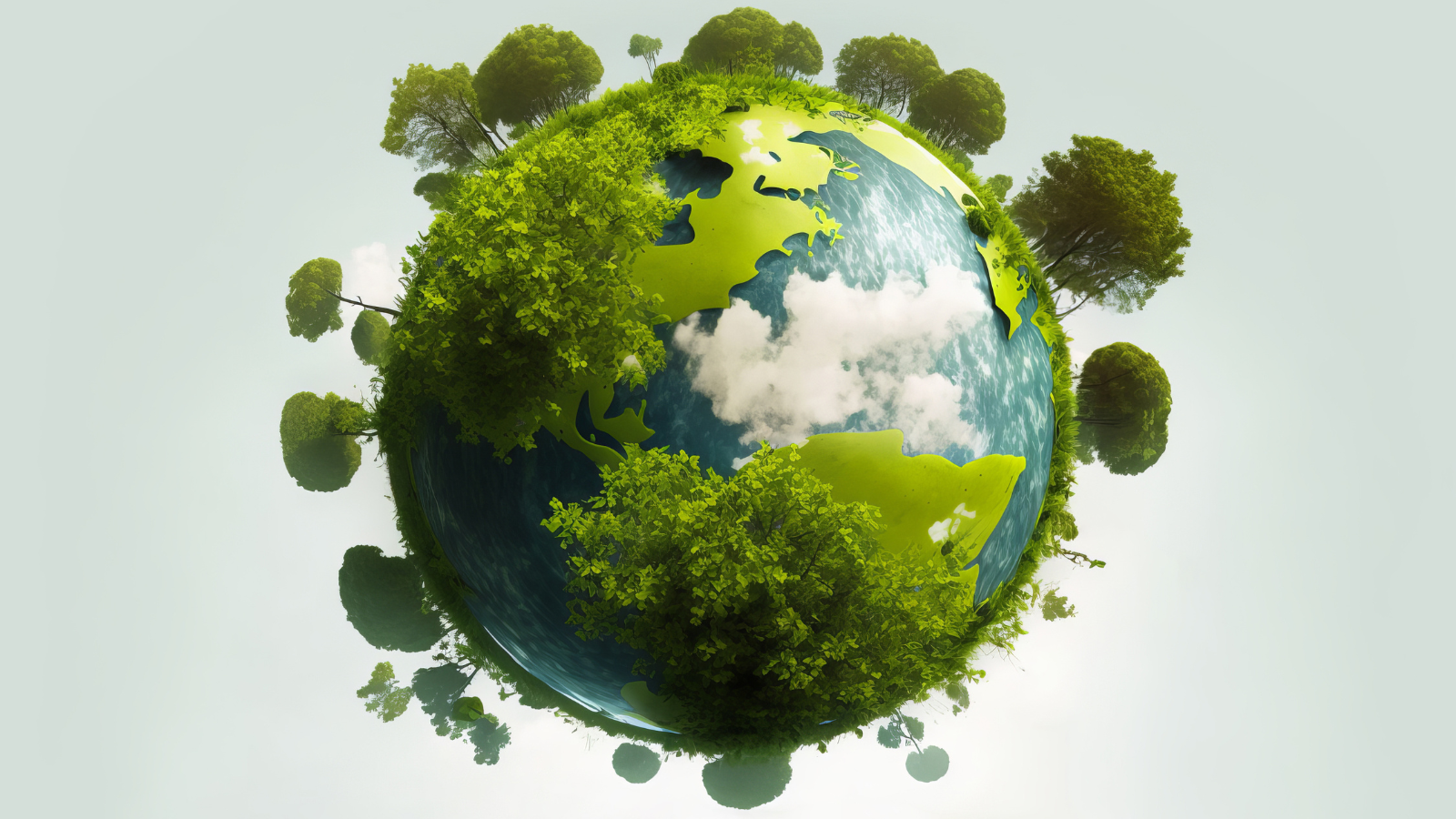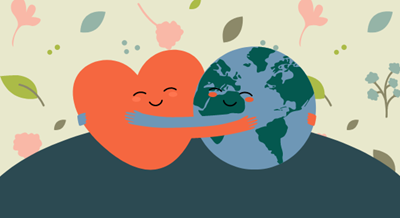
News around climate change can bring feelings of eco-anxiety. We explore how we can protect our mental wellbeing and feel empowered to take positive action for the planet.
For many of us, climate anxiety is an ongoing concern in our lives. Worry about the effects of climate change can weigh heavy on our minds: it is normal to experience concern and fear about the future of the planet. Anxiety about the climate can also lead to feelings of anger, which, in turn, can affect your mood.
At Walk in My Shoes (WIMS), we brought together a number of experts to explore the links between climate change and mental health. With them, we discuss how this eco-anxiety can affect our day-to-day lives, and how identifying these feelings and taking action can help to empower us. We also explore how nature can support us as we navigate feelings of overwhelm and helplessness around the climate crisis.
Understanding climate psychology
Caroline Hickman is a psychotherapist and lecturer at the University of Bath, researching climate change. She explains that a psychological approach to dealing with the climate crisis means:
“We have to face the difficult truths emotionally, cognitively and practically, in order to face the climate biodiversity crisis.”
She references Gus Speth, a United States (US) adviser on climate change. Gus used to think the top environmental problems were biodiversity loss, ecosystem collapse, and climate change. Gus assumed that, with 30 years of science, we could address these issues. But, Caroline tells us, Gus realised he was wrong; he now holds that “our top environmental problems are selfishness, greed and apathy” and, to deal with those, Caroline tells us, “we need a spiritual and a cultural transformation”.
“We're living and witnessing something unprecedented. We are also living in an information age, with news and updates around climate change being presented to us every day. And that can be overwhelming.”
"Humanity has never dealt with anything on this scale", Caroline explains. "It's OK to feel anger. It's OK to feel hope and hopelessness and grief and solastalgia and avoidance, and it's OK to feel despair, because they all make perfect sense. Frustration, guilt, and despair might make up our emotional biodiversity around climate change, but that's a normal and natural response to our reality”, she explains. Solastalgia is when someone feels their peace is being disrupted due to a change in their natural environment – often caused by climate change itself.
She adds, "to feel eco-anxiety is to feel emotionally healthy in response to the external reality. This is how we measure mental health: we look at our response to external reality, and external reality is pretty scary right now."
Caroline explains that eco-anxiety is substantially affecting children and young people, sharing some interesting findings from her research.
This research surveyed 10,000 children and young people aged 16 to 25 across 10 different countries that included the Philippines, Nigeria, India, Portugal, Brazil, the United Kingdom, the US and France.
Key findings include:
- 45% said climate anxiety was having a negative impact on their daily functioning
- 52% thought their family security (economic, social and physical) would be threatened
- 40% said they were hesitant to have children because of climate change
- 48% said they'd felt dismissed or ignored by other people when they tried to talk about climate change.
Moving forwards, Caroline explains that this is something we can act on. “I don't want us to get too depressed about this data”, she tells us. “I want us to take action, and I want us to validate it for young people and how they're feeling”. It is too late now to change the beginning of this story, Caroline advises, but she urges us to find hope and support in our communities.
She encourages us to reframe climate psychology by turning eco-anxiety into eco-compassion and eco-empathy, explaining that doing so can be transformational.
We also need internal activism, she advises: we need to take care of how we feel, to take care of our thinking, as well as our external activism. She advises that we harness this internal and external activism and transform climate anxiety into empathy, courage and community awareness.
Caroline wraps up by telling us that she has hope for the future of the world: “There is hope, and I actually have hope” she tells us. “I've listened to these stories from children and young people for 10 years. What sustains me is their courage, their capacity to tell us how they feel, and their radical hope, not naive hope.”
How nature can impact urban communities
Tadhg MacIntyre, Assistant Professor of Environmental Psychology at Maynooth University, outlines solutions to prioritise human and environmental health.
Tadhg’s work looks at natural ways to foster urban health and wellbeing which can deal with eco-anxiety and reduce stress in cities. He expresses how the use of language around the climate crisis is very important. Why? Because negative emotions overwhelm us. So, if we can reframe “climate challenge” to “climate crisis” or “climate catastrophe”, we can stop ourselves from feeling like we can’t move forward with this alarming situation on our planet. “The debilitating language around catastrophe and crisis, it tends not to mobilise us”, Tadhg maintains. A solution is to “use a language which is motivating, which draws people in and which empowers them…we're trying to avoid what we call “learned helplessness”. We're actually trying to get learned optimism”, he explains.
Tadhg references the United Nations’ Sustainable Development Goals (SDGs) that include no poverty, affordable and clean energy, good health and wellbeing, reduced inequalities, responsible consumption and production, as well as clean water and sanitisation. He maintains that mental health and health are linked to all the different facets of the SDGs. Additionally, we must recognise that mental health difficulties are linked to inequality and lack of opportunity, and that green space availability appears vital for wellbeing.
Tadhg’s current project, called GoGreenRoutes, is an European Union (EU)-funded project sowing the seeds for increased nature-connectedness across Europe, Latin America and China.
Working across six European cities (including Limerick in Ireland), the project demonstrates how prioritising urban health and wellbeing will help us deal with some of the issues around eco-anxiety and reducing stress in the city, he explains.
“We are focusing on how nature can bring people together and give them a capacity to define their own pathway for coping, because there are many different possibilities around that”.
The project is looking to prioritise human environmental health in a connected way. Some of these possibilities include green exercise and active travel, and restorative spaces, such as therapy gardens that can help citizens seeking solace while encouraging social interactions. There are also citizen-led activities, such as Citizen Science (research carried out by members of the public who volunteer to collect scientific data): “it can’t be the scientist telling people what to do”, he tells us.
Bees that benefit the community
Anthony Freeman is a beekeeper in the Inner City Beekeeping Project in Dublin 8. For him, beekeeping is a reason to be in nature. “We find that once people start working with the bees, then they want to know everything else around nature”, he explains.
Anthony discusses how the Inner City Beekeeping Project involves creating green spaces in the city and then trains people from Dublin’s communities to be beekeepers themselves.
He outlines how the idea of climate change can feel like a massive problem, but, with beekeeping, it’s a softer message: “it’s about encouraging people to come along and connect with nature and get involved”.
Anthony explains how nature is a great way of building community: “it involves people from mixed backgrounds and there's a lot that can be achieved around mental health”.
“Working with the bees feels like being a part of nature”, he tells us; it creates that connection for people taking part in the programme, begins that journey of a cycle between them and their environment, and helps in learning more about biodiversity.
“You start learning about things, then you start seeing the solutions and how easy it is to change people's mentality when they see the benefits for themselves.”
A future of hope and resilience
These experts, from many different fields relating to climate, the environment, and mental health, recognise that we are living through challenging times. Tadhg reiterates the importance of connecting with our natural world: “if we connect people with nature… it springs like a fish from water”.
Caroline underlines that “humanity's need to understand each other… we've got more in common than we have difference between us and we need to harness this”.
“We're actually part of the planetary health view; we're just another functioning being on the planet, and there are many other organisms we have to thrive with. I think that must be at the heart of what we're trying to do.”
While they all agree that the situation with the climate is very real, they share a message of hope by maintaining the importance of us using our resilience to take action so that we can create positive change and play a part in protecting the planet.


